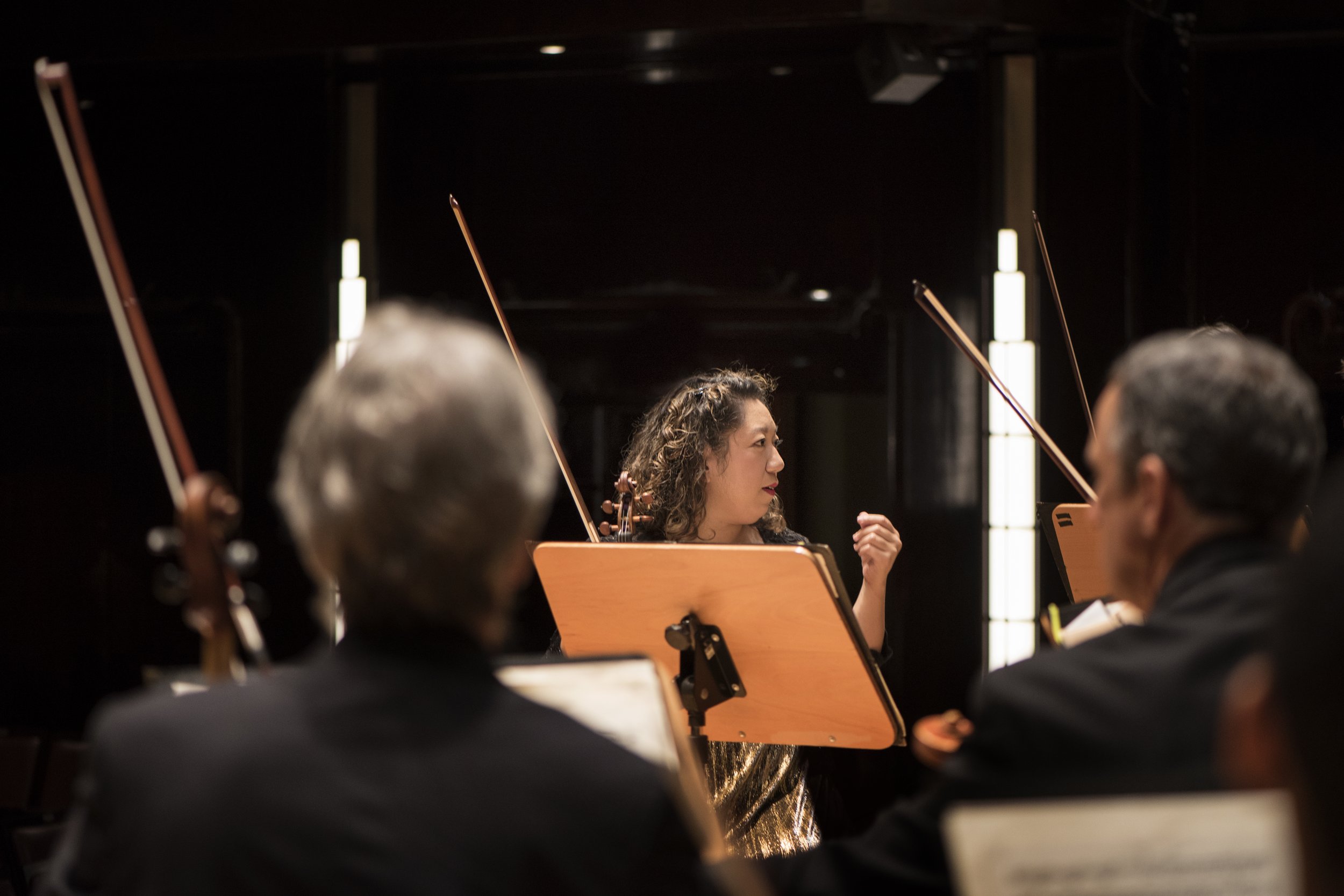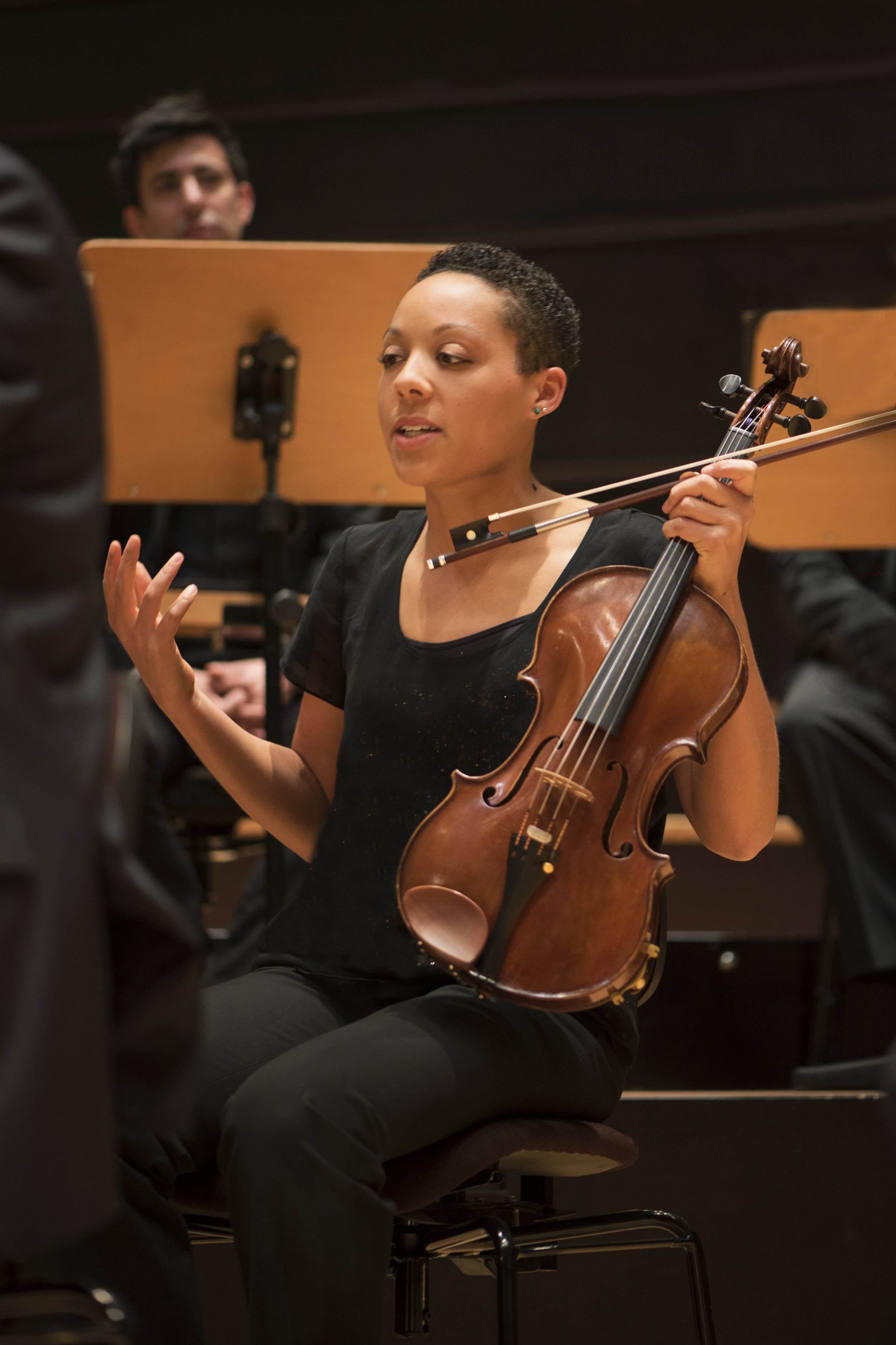REVIEW: Orpheus Reflects On the American Dream at 92NY
Above, clarinetist Anthony McGill. Photo by Eric Rudd.
December 14, 2023
In 1892, Czech composer Antonín Dvořák arrived in New York to assume directorship of the National Conservatory. Much as he had forged a Czech musical style using folk material of Moravia and Bohemia, he was keen to guide American composers in finding America’s national musical voice. African-American Spirituals, Native American rhythm, and the natural majesty of the continent itself (the prairie’s “wide open spaces” and native birdsong, for example) inspired the composer.
Dvořák’s time in America produced his Ninth Symphony, From the New World — premiered in 1892 by the New York Philharmonic at Carnegie Hall — as well as the String Quartet No. 12 in F Major, Op. 96, nicknamed the “American.” Flash-forward to the distinguished musical career of genre-spanning Coleridge-Taylor Perkinson — cofounder of the pioneering Symphony of the New World, and music director of Alvin Ailey American Dance Theater, as well as arranger for popular artists such as Marvin Gaye — whose Sinfonietta No. 2, “Generations,” a century after Dvořák, embodies that sought-after integrated American musical rhetoric.
Orpheus Chamber Orchestra, the ultimate chamber ensemble, presented a riveting — and all too rare — reading of Perkinson’s symphonic contemplation of ancestry and heritage at 92NY. They then looked back to another crucial link in this chain, Aaron Copland, and finally, to Dvořák.
Perkinson’s music speaks to the modern listener in a language that feels timeless. His Sinfonietta No. 2 unfolds in four concise movements. The first, Misterioso and Allegro, dedicated to the composer’s daughter, is restless and seems to impart a warning to proceed cautiously, building to a fugue-like episode expounding on the melody of “Hush Li’l Baby, Don’t Say a Word.”
Orpheus articulated the contrapuntal texture with impressive clarity and cohesiveness, and their pristine intonation allowed Perkinson’s shimmering, open harmonies to resonate purely, especially in the bittersweet second movement, Alla sarabande, an ode to matriarchs.
Photo by Neda Nevaee
Perkinson’s jazzy side comes through in the following Alla Burletta, a playful portrait of his grandson in plucky pizzicato. Palpably entertained by the brief movement’s insouciant guitar-like strumming, the audience’s applause was interrupted by the sudden burst of the Allegro vivace finale, windswept and prickly.
New York Philharmonic principal clarinetist Anthony McGill joined Orpheus for a stunningly collaborative performance of Copland’s Clarinet Concerto. Premiered in 1950 by Benny Goodman, this tricky score for small orchestra of strings, harp, and piano is a vivid time-capsule capturing the state of American concert music following World War II, as well as an ideal vehicle for McGill’s virtuosity.
His generous singing line stemmed from a bottomless well of air, and his plush tone rounded the tapered tips of phrases. In the serene first movement, Slowly and expressively, a lyrical dialogue unfolded between the solo clarinet and the strings. Making a convincing case for the chamber music quality of the work, Orpheus and McGill sculpted the long-lined phrases like a living, breathing organism, buoyed by the delicate, crystalline textures of harp and piano.
In the fantasia-like cadenza that connects the first movement to the Latin-American inspired second movement, we hear Copland’s interest in reconciling classical and popular idioms, furthering the experiment of Gershwin’s Rhapsody in Blue. McGill’s cadenza created the illusion of being improvised with the whimsy of a busker working up a crowd. From the clarinet’s chesty lows to its piercing upper register, his tone throughout is of one voice.
Photo by Neda Nevaee
The second movement, Rather fast, is a roller-coaster ride of syncopation, shifting meter, and changing tempo — as if Stravinsky had set The Rite of Spring in Brazil. On paper it looks impossible to pull off without a conductor. But, this team cornered the angles with panache, building to the stinging final chords with momentum.
Orpheus cellist and artistic director James Wilson calls his arrangement of the “American” Quartet of Dvořák American Sinfonietta in F Major (after String Quartet, Op. 96). The performance had the air of a festival — like a colloquium of string quartets playing the piece simultaneously — rather than a tightly suspended, rollicking gallop. In the Lento, the first violin’s mournful lament, soaring above a river-current accompaniment, threatened to drown under the weight of additional fiddles. Likewise, the scherzo’s breezy bird-call bogged down, never quite taking flight.
But, the first movement’s cinematic unfurling benefitted from symphonic expansion, and Orpheus leaned into their advantage, bringing heft and impact to dynamic contrasts and accents. If the Allegro ma non troppo’s knotty development section suffered from too much of a good thing, the levitating Finale: Vivace ma non troppo achieved liftoff.
***







